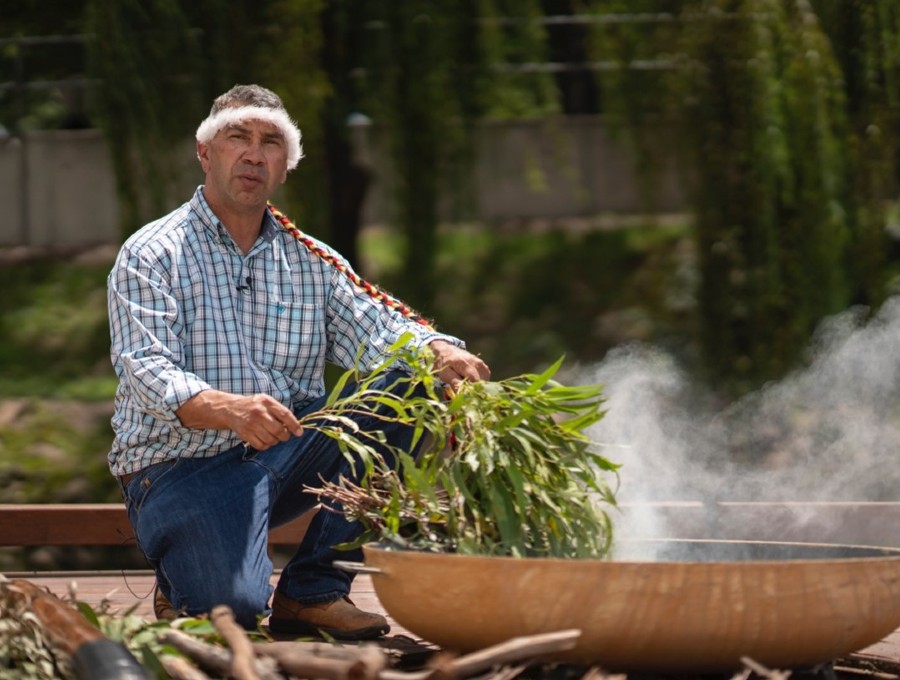The peoples’ movement for reconciliation was strong, the fight for Native Title rights continued, and talk of a treaty was back in the air. With the 2000 Olympics on its way to Sydney, there was an optimism for the rights of First Nations Peoples in the new millennium.
Corroboree 2000 came at a time of reckoning for Australia’s relationship with its own history. The 1990s saw landmark inquiries, such as the Royal Commission into Aboriginal Deaths in Custody (1991) and the National Inquiry into the Separation of Aboriginal and Torres Strait Islander Children from their Families (1997), which revealed the deep, ongoing legacy caused by state intervention in Aboriginal and Torres Strait Islander families and communities.
The Council for Aboriginal Reconciliation (CAR) – Reconciliation Australia’s predecessor – was established in 1991 by a unanimous vote in the Australian Parliament following the Royal Commission’s findings. The Council was tasked with fostering reconciliation, culminating in Corroboree 2000, a two-day event ahead of the centenary of Federation.
The event started on 27 May 2000, with the largest gathering of Aboriginal and Torres Strait Islander and non-Indigenous leaders in Australian history, taking to the stage of the Sydney Opera House to witness the delivery of the Council’s final documents to the Australian people.
Formed through months of consultation, the Australian Declaration towards Reconciliation and Roadmap for Reconciliation made key arguments: the decade of formal reconciliation was not enough to address 200 years of history, and that the majority of Australians agreed reconciliation was vital for Australia’s future.
The essence of the declaration was conveyed in its final message, ‘Our hope is for a united Australia that respects this land of ours; values the Aboriginal and Torres Strait Islander heritage; and provides justice and equality for all.’
This support was apparent the next morning, Sunday 28 May at the People’s Walk for Reconciliation, the highlight of Corroboree 2000.
The Bridge Walks
In a monumental display of support for reconciliation, more than 250,000 Aboriginal and Torres Strait Islander people and their supporters walked across the Sydney Harbour Bridge. Starting on the north end of the bridge, supporters made their way across together in a stream that lasted for close to six hours.
A quarter of a million joyous people braved the chilly weather as they walked, danced, skipped and sang across the Sydney Harbour Bridge in a historic display of unity and commitment to reconciliation.
Over the following months, nearly one million people took part in walks for reconciliation held across the country in what is still the largest display of public support for a single cause in Australian history.
Twenty-five years later, these historic walks continue to inspire communities. In big cities and small towns across the country, they serve as a powerful reminder that reconciliation is an ongoing journey for all Australians.
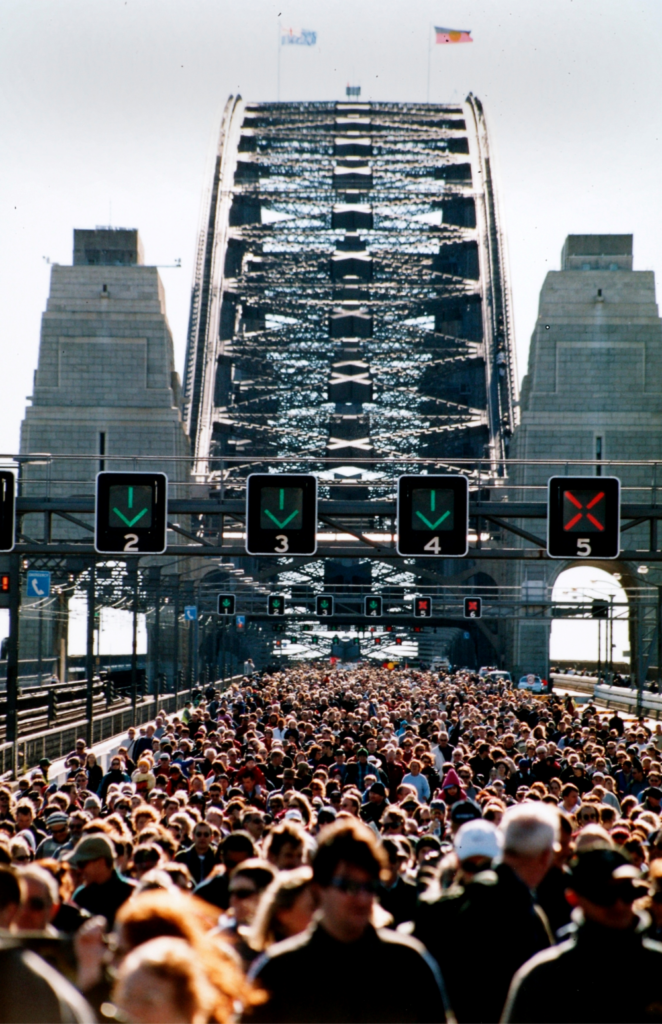
Queanbeyan-Palerang Regional Council Reconciliation Walk
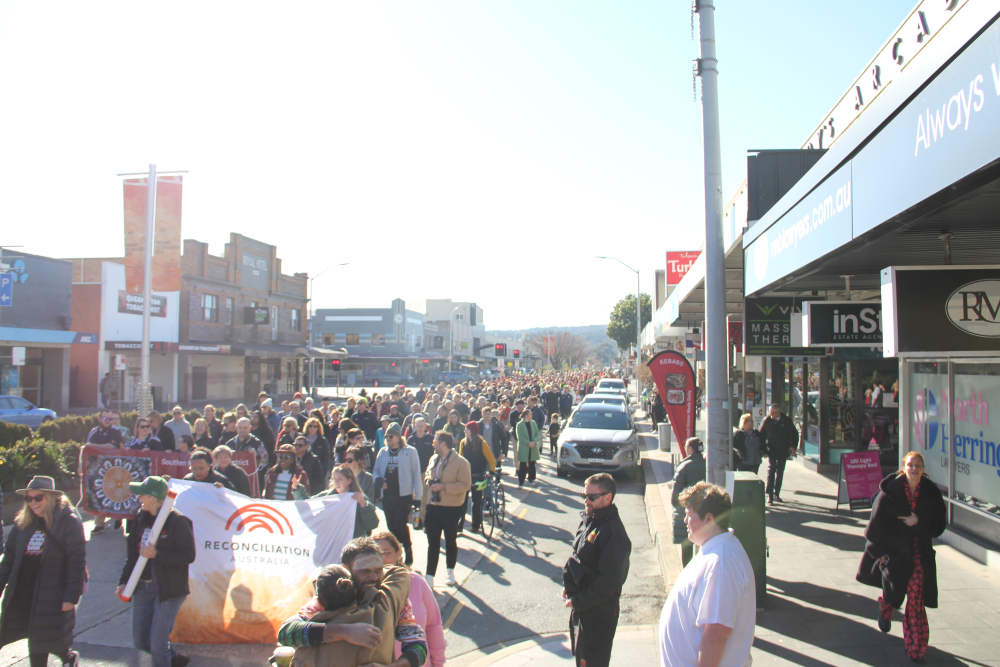
The annual reconciliation walk through the main streets of Queanbeyan brings together thousands of community members to mark National Reconciliation Week. The Queanbeyan-Palerang Regional Council host the walk in partnership with community groups, schools and local Traditional Owners and Elders. The involvement of local kids is a key part of this event; all schools in the QueanbeyanPalerang region take part in both the walk and the official ceremony in Queanbeyan Town Park.
Reconciliation WA Walks for Reconciliation
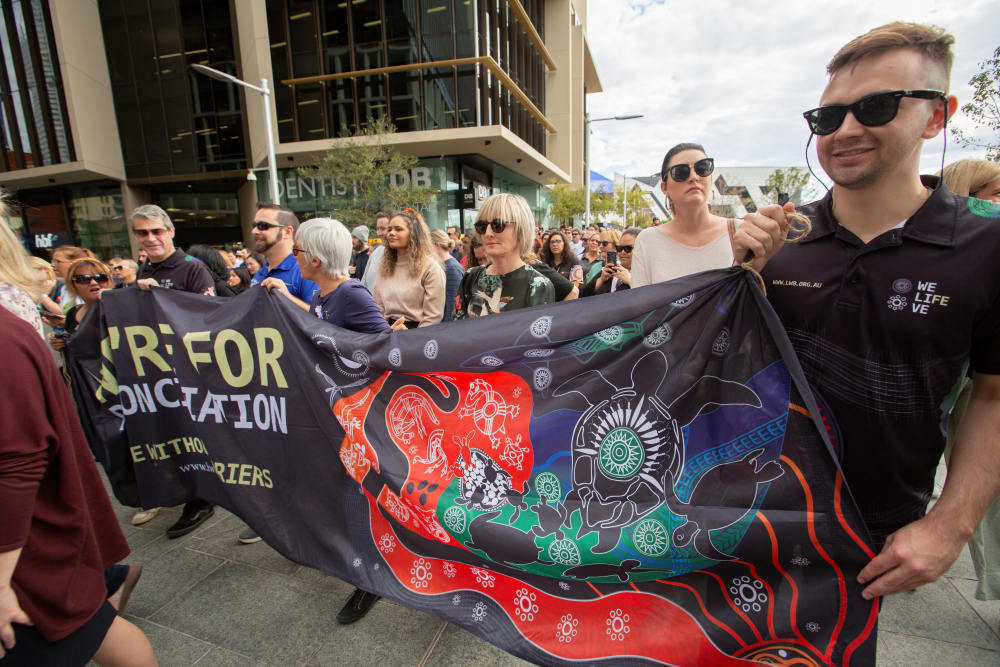
A major event in the Western Australian NRW calendar, the annual Walks for Reconciliation take part in multiple cities and regional centres across the state. Reconciliation WA is part of the Australian Reconciliation Network with other state and territory organisations. The walks connect community members, local reconciliation groups, councils and corporates in a unified show of support. This year’s events focus on truth and healing as participants are invited to take part in place-based truth-telling by sharing stories about the history and significance of the Countries the walks take place on – Galup (Lake Monger) in Boorloo (Perth) and Koombana Bay in Goomburrup (Bunbury).
This article is from the 53rd edition of Reconciliation News. Read the rest of the issue.

